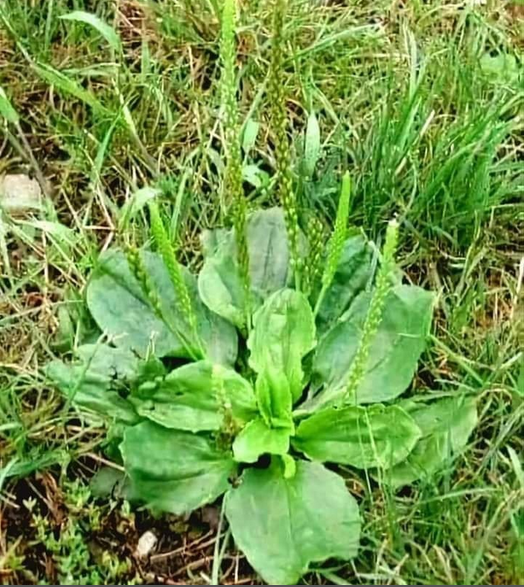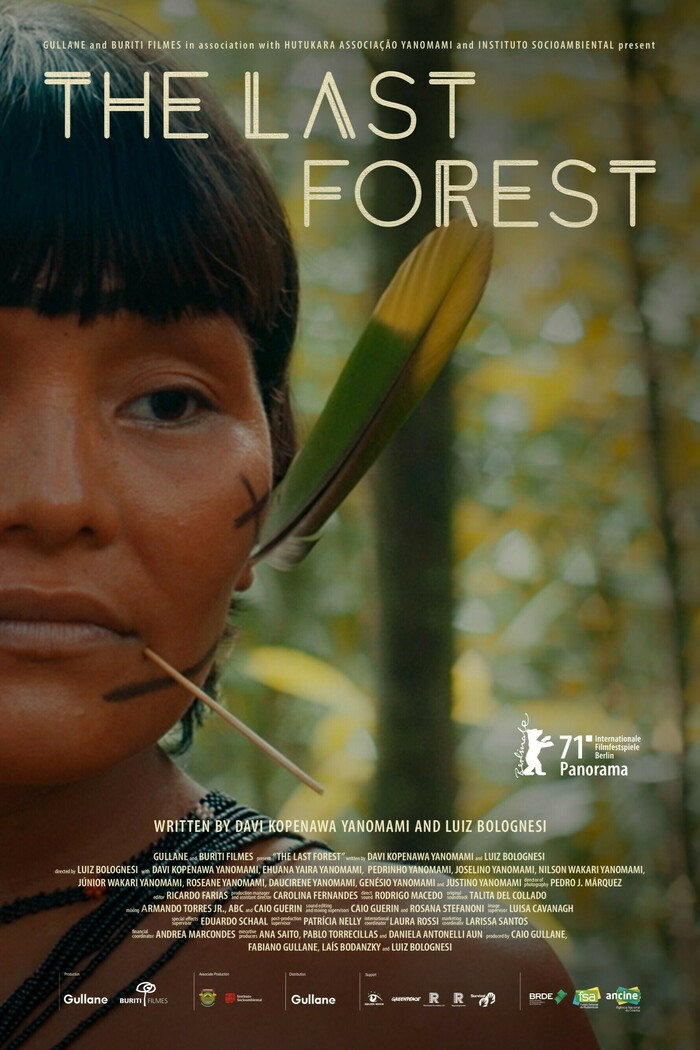
17 / 01 / 2018
Plan de EEUU en la Amazonia.
Crear laboratorios biológicos con fines militares
#Brasil #Amazonia #Colombia #EEUU
https://bibliotecapleyades.net/sociopolitica2/sociopol_globalelite_la219.htm
2 Shares

#Brasil #Amazonia #Colombia #EEUU
https://bibliotecapleyades.net/sociopolitica2/sociopol_globalelite_la219.htm

Mauvaise #herbe que l'on dit !! Hé bien non! Bien au contraire !! On m'appelle un #plantain à feuilles larges. Pas Belle la #nature ??
Je pousse particulièrement bien dans un sol pauvre et rocheux (comme les allées) et on me voit souvent aux côtés de pissenlit 🌻
Le plus souvent, vous me verrez grandir dans des graviers et des chantiers alors que la nature cherche à régénérer le sol.
J'ai été introduit en Amérique du Nord dans les années 1600, elle a été appelée autrefois « White Man’s Foot » par les Amérindiens qui ont vu que là où les Européens marchaient et perturbaient le sol, j'ai surgi.
J'ai souvent été le remède idéal pour les randonneurs harcelés par les #moustiques. Parce que je tire des toxines du corps avec ma nature astringente.
Je peux être écrasé (ou mâché) et placé sous forme de cataplasme directement sur le site des piqûres d'abeille, des piqûres d'insectes, de l'acné, des éclats de verre ou des rougeurs. Bandez la zone et permettez-moi d'exercer ma magie pendant 4 à 12 heures.
Je peux aussi être utilisé pour créer un baume pour les kits d'urgence, ou une infusion utilisée comme lavage de la peau ou général.
Je suis aussi un remède remarquable et apaisant contre les hémorroïdes.
Je suis réputé pour mon effet guérissant sur le système digestif.
Ceci est particulièrement utile pour toute personne qui a été endommagée par des antibiotiques, des anti-inflammatoires ou des antidouleurs, des allergies alimentaires ou une maladie cœliaque.
Mes feuilles et mes graines ciblent spécifiquement le système digestif pour la guérison.
Mes feuilles peuvent être pentées comme du thé, ajoutées à des soupes ou séchées avec une sauce semblable aux chips de chou frisé.
Mes graines – un type de psyllium – peuvent être broyées ou trempées pour du mucilage en vrac ou des fibres absorbables, qui, consommées avant les repas, peuvent aider à perdre du poids.
Parce que je suis un expectorant doux et riche en silice, une infusion peut être utile pour les problèmes pulmonaires, la toux et le rhume.🌱
Ajoutez aux salades, mâchez pour soulager la soif, ou dégustez en sauté frites.
Ce légume sauvage polyvalent vous maintiendra en bonne santé pour les années à venir !
#médecine #plantes #fleurs #flowers #bienetre #bienetreaunaturel #plants #voyage #biensendormir #beautiful #naturelovers #amazonia #plantes #nature #perlesdamazonie
Source FB: Perles d Amazonie
Decades ago, the U.S.-based petroleum corporation Texaco devastated Lago Agrio in the Ecuadorian Amazon with pollution, in what came to be known as “the Amazon Chernobyl.” It resulted in roughly 1,000 carcinogenic waste pits and 16 billion gallons of toxic wastewater dumped into pristine rivers. Among local people who drank and bathed in these waters, cancers and miscarriages skyrocketed. Represented by Steven Donziger, Indigenous peoples sued the company, which had been bought by Chevron in 2000, and won over $9 billion. Chevron, however, ignored the Ecuadorian courts and took its case to New York, where it found a friendly judge, amenable to its aim of not paying and of destroying Donziger. Contacted for comment, Chevron noted it paid roughly $40 million for environmental remediation and accused Donziger of being a disbarred racketeer convicted of criminal contempt. Details provided by Donziger, however, tell a different tale altogether.
#environment #Chevron #Ecuador #StevenDonziger #Amazon #Amazonia #Truthout
https://www.youtube.com/watch?v=2tK-5dydqp8

In powerful images, alternating between documentary observation and staged sequences, and dense soundscapes, Luiz Bolognesi (Director) documents the Indigenous community of the Yanomami and depicts their threatened natural environment in the Amazon rainforest.
The native Yanomami people live in the northern region of Brazil, in a mountainous terrain of the Amazon forest surrounded by landscapes that are quite distinct from what we are used to seeing. Vast tablelands, waterfalls, and streams can be found in the dense woodland, while the exotic savannas often overlap with the clouds at the top of the forest.
In these exotic and unusual landscapes, the Yanomami write a rare history of cultural resistance. As other native tribes are forced into the assimilation of white identity – be it through the invasion of evangelical churches, or the entry of loggers, miners, and engineers that are opening roads or building dams – the Yanomami, guided by their leader and great shaman Davi Kopenawa Yanomami, fight to preserve their spiritual and daily culture. In order to protect their identities, they battle a real war filled with numerous internal conflicts. Such as the desire of young people of owning a smartphone or of leaving the forest in search of the city-life.
The film “The Last Forest” is a documentary feature that aims to introduce these characters and this conflict through the observation of the Yanomami’s everyday life. It is from the interaction with them, from the desire of listening and understanding them in their own terms, that our film is born.
#TheLastForest #documentary #film #nature #environment #indigenous #peoples #community #cultural #resistance #identities #Amazon #Amazonia #Yanomami #Brazil #LuizBolognesi #Berlinale #AÚltimaFloresta #docu-films
● NEWS ● #ClimateNewsNetwork #Amazonia #Amazon #Climate ☞ Amazonia’s forests leak carbon they once stored https://climatenewsnetwork.net/amazonias-forests-leak-carbon-they-once-stored/
From Peru to Pompeii: What everyone needs to know about the Amazon
https://vimeo.com/478652285
In this webinar, ethnobotanist Dr. Mark Plotkin talks about his groundbreaking work with the Amazon Conservation Team (ACT) working with indigenous colleagues to protect nature and culture in the Amazon. To date, ACT has partnered with over 55 tribes to map and improve management and protection of over 80 million acres of ancestral lands. Activities range from ethnographic mapping to creating Shamans’ Apprentice clinics to establishing an Indigenous park guard force to sustainable harvesting and marketing of non-timber forest products. Dr. Plotkin will also talks about how local knowledge and biological diversity continue to impact the 21st century, from the rainforest to the vineyard.
A Storied Path: On Mark Plotkin’s “The Amazon: What Everyone Needs to Know”
https://lareviewofbooks.org/article/a-storied-path-on-mark-plotkins-the-amazon-what-everyone-needs-to-know/
Mark Plotkin: What the people of the Amazon know that you don’t
https://www.youtube.com/watch?v=_XJ20tt5nPQ
“The greatest and most endangered species in the Amazon rainforest is not the jaguar or the harpy eagle,” says Mark Plotkin, “It’s the isolated and uncontacted tribes.” In an energetic and sobering talk, the ethnobotanist brings us into the world of the forest’s indigenous tribes and the incredible medicinal plants that their shamans use to heal. He outlines the challenges and perils that are endangering them — and their wisdom — and urges us to protect this irreplaceable repository of knowledge.
#nature #ethnobotany #Indigenous #knowledge #Amazon #Amazonia #MarkPlotkin #AmazonConservationTeam #lareviewofbooks
Most of Brazil has a serious deficit in soil moisture today. The southern parts of the Brazilian Amazon are also affected via deforestation and alterations in regional rainfall. Defend natural habitats and their peoples, boycott businesses that profit from destruction and oppression.
#Amazonia #Brazil #Deforestation #Water #Soil #Climate #Rainfall